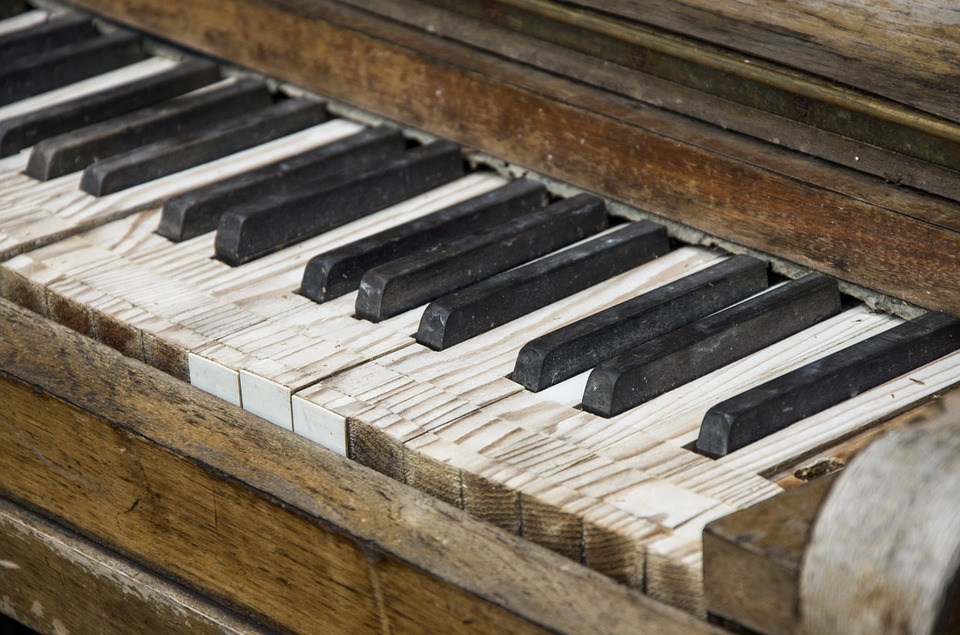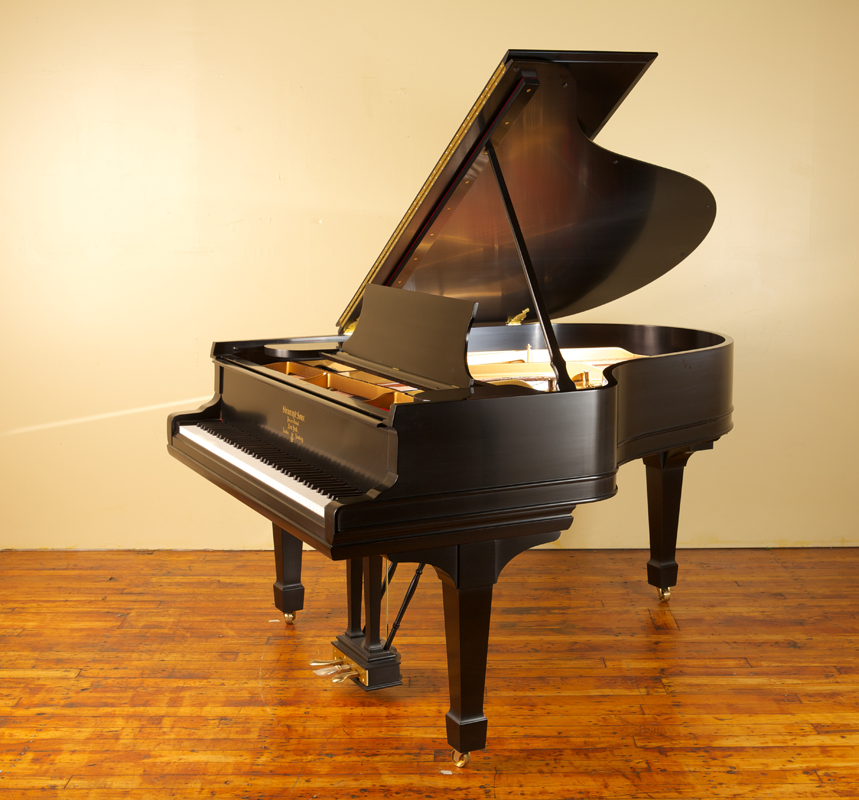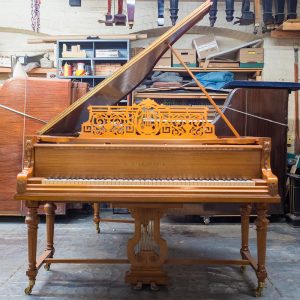This is a re-post of an article that was originally published in 2010. The pricing mentioned may be slightly different now than at the time the article was published, however, this article contains a ton of useful information.
A vintage piano is not simply an old piano. A vintage piano must have a real value. A Wurlitzer piano made in the early 1900’s is simply an old piano, while a Steinway piano of the same era would be considered vintage. What is the difference? The answer is simply quality and value. The vintage piano is valuable primarily because it’s potential for beautiful sound and appearance, and secondarily because of the name Steinway. The value of the vintage piano is enhanced by the retention of the original case parts and ivory keys. This is especially true if the piano has a unique case. Examples of this would be a Louis XV case, or a Centennial D with serpentine legs, original ivories, and a cut out music rack. However, a straight legged Steinway from the 1940’s would also be considered a vintage piano, albeit of lesser value, solely for the potential beauty of the sound and simple elegance of the case.
Vintage pianos: Potential value versus realization of potential.
To illustrate this topic I will use the example of a Steinway rosewood A with flower pot legs, cut out music rack, and original ivory keys. This is a vintage piano in un-playable condition.

This piano has a lot of potential value because the rosewood veneer is salvageable; the piano has all its original parts, and has potential for being a marvelous musical instrument. To fully realize this potential, the piano must be fully restored to its original condition.
In the example (below) of this Steinway A the original sound board, pin block and action are un-usable and must be replaced. If this is not done the full potential value of this vintage piano could never be realized because the piano would never play correctly. At the same time, the case of the piano would need to be restored with the original parts to realize the full potential value of the piano.


The Soul of a Vintage Piano
There is a difference between a properly restored vintage Steinway and a factory produced piano of any brand. Again I will illustrate this with an example. Picture a Yamaha C7 (7 ft. 5 in.) and a restored vintage Steinway B (6 ft. 11 in.) sitting side by side in a room with good acoustics. You sit down to play the C 7, and it is a marvelous piano. You move over to the Steinway B to compare the sound and touch. As you play you realize that there is a subtle difference in the sound. The Steinway has a warmer, more resonant and responsive sound and touch. You realize that the sound of this piano is truly unique. It cannot be duplicated exactly no matter how hard you might try. Here are the reasons. The Yamaha has been built in a factory. Each part of the assembly of the piano has been mechanized as much as possible. The screws are all tightened exactly the same. The tolerances of the bridge notches and pins are exact. The result is a wonderful mass produced piano. In comparison the restored vintage Steinway is stripped down by hand, refinished by hand, the raw finish is rubbed by hand in a process that takes weeks. The best color for the finish is chosen specifically for that piano. Next, the sound board, pin block and bridge caps are replaced. The sound board is crowned on a belly table made by the belly man. Each table has different characteristics. Each belly man works in his own way, and all of his pianos have qualities recognizable as his work. Next, the action is stripped, cleaned, re felted, reassembled, regulated, and voiced in a process that takes weeks. The best action parts are considered specifically for the character of the sound that is desired for that piano. Once the piano is strung and tuned the tone regulation begins. Again this work proceeds with the purpose of bringing out the character of that one particular piano. The result is a piano that has something more than the sum of its parts. It is unique in touch and sound. It has the individual stamp of everyone that has worked on it. It has a unique history going back though the years to the craftsman who originally created the piano sometimes more than a hundred years ago through the restoration process which is totally individual to this piano.
Vintage pianos: Real value in a practical world
It is very well to talk of the beauty of the piano and its marvelous sound, and its soul. What does this all mean in the real world?
Vintage Steinway pianos as an investment
Your primary investment in the purchase of a vintage piano is in the satisfaction that you get from playing, and looking at the piano. This is the intrinsic value of the piano and is completely subjective. The monetary value of the piano can be identified by comparison shopping. First we will consider vintage Steinways in as is condition. This means that full restoration is needed. Here are realistic wholesale prices that a dealer would typically pay for each model of piano needing full restoration.
Steinway S, 5 ft 1 in. $4,500.00
Steinway M, 5 ft. 7 in. $5,500.00
Steinway O, L, 5 ft 10 ½ in. up to $8,500.00
Steinway A1, 6 ft. 2 in. up to $9,500.00
Steinway A2, 6 ft. 1 in. up to $9,500.00
Steinway A3, 6 ft. 4 in. up to $11,000.00
Steinway B, 6 ft 11 in. up to $14,000.00
Steinway C, 7 ft. 5 in. up to$17,000.00
Steinway D 8 ft. 11 in. up to $22,000.00
These are wholesale prices for ebony pianos with straight legs. Dealers would usually pay a premium for wood tone pianos with ornate or art case styles. A premium is sometime paid for usable ivories.
Here is a spreadsheet giving the retail prices for most common models and styles of restored Steinway vintage grand pianos. This can be verified by comparison shopping.

Other makes of valuable vintage pianos
There are several other brands of piano that have value as vintage pianos. They are Mason and Hamlin, Bechstein, Bosendorfer, Bluthner, etc. These pianos can be extremely satisfying to play, but do not have the investment value of Steinway pianos. Furthermore they are harder and more expensive to restore properly.
If you have read up to this point you will have the basic knowledge of what a vintage Steinway Piano is. You will also have a good idea of what an as is Steinway grand piano in need of restoration should cost as well as what a vintage restored Steinway piano should cost.
Remember that no search for a vintage restored piano is complete without a trip to Craftsman Piano Sales and Service.
Joe Hanerfeld
Craftsman Piano Co.
www.craftsmanpiano.net




